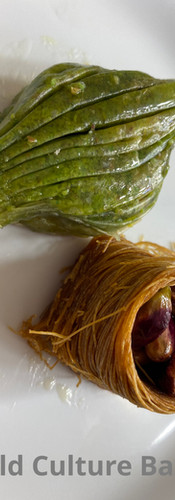A long layover in Istanbul
- worldculturebazaar
- Apr 22, 2022
- 6 min read
Updated: Apr 28, 2022

If it happens to be that you have a long layover in Istanbul, use the opportunity to visit one of the charmiest cities.
The Istanbul Airport is huge and full of different attractions, so you can easily spend hours there. In 2021 it was nominated as the best airport in Europe and took second place in the world. Now they have an ongoing campaign to become the first in the world.
The airport looks more like a huge mall with a mini Grand Bazaar, fancy designer shops, many different restaurants, children's play areas, nap zones, lounges, exhibitions, a museum, and even a dog toilet. However, as much as I love the service of Turkish Airlines, I could not say the same about the airport customer service. I could say that I am spoiled by the American customer service but from the reviews, I see that this is not only my opinion. The other disadvantage is the internet: you get only one hour for free.
So if you have at least eight hours, I advise you to spend your time much more interesting – go to the city!
My flight arrived at 6 in the morning, and the connecting one was at 4 PM. Before the pandemics, there were organized tours from the airport, now you have to take care of everything yourself. First, make sure you have a visa if you need one. It is easy to get one before the immigration lanes at the airport, however, when the time is a value of gold, I would get it in advance.
Having 10 hours, I spent some time at the traditional Turkish bath - hammam, enjoyed the tranquility of a mosque, walked through the Grand Bazaar, chatted with people, had tea with them, and in between savored some Turkish cuisine, and returned to the airport way to early 😊
In the time, spring of 2022, the New Istanbul Airport is still not connected by the metro, however, the situation should change by the end of this year, when metro line M11 will be finished.
Now there are a few options to go to Sultanahmet, the historical center of Istanbul, where famous tourist attractions, such as Topkapi Palace, Hagia Sophia, Sultanahmet Mosque, Basilica Cistern, Grand Bazaar are located.
The easiest and fastest way (ca 50 min) is by taxi (no fixed amount, price depends on the traffic, expect to pay at least $40). There are 3 different color taxi services at Istanbul Airport: yellow, turquoise, and black taxis. Yellow taxis are the cheapest. You can pay with cash or credit card in a taxi.
It is good to have the taxi option, especially in case you are late returning to the airport, but I prefer the airport shuttle bus.
Two bus companies handle the transportation from and to Istanbul International Airport, HAVAIST Buses and IETT public buses. However, only HAVAIST shuttles offer a direct connection to the center as IETT buses serve mostly less popular parts of the city.
HAVAIST buses ( you would need Route 12) run around the clock with every 30-minutes routes (every 45 in the early morning hours) and their ticket costs only 18₺ (2.8€ / 3.1$).

The bus station is located at airport level 2. In that area, you can also purchase an Istanbulkart which is valid for all public transportation means, and even for the public toilets. This is the only place where you can pay for bus tickets in cash. Buses accept only credit cards (Visa or Master). I did not have any problems using my Visa on the bus.
Moreover, you can also pay using your credit card via HAVAIST App or book your tickets in advance and simply download a QR code.
It takes about 100 min for HAVAIST buses to get from the Istanbul Airport to Sultanahmet Square. In the spring of 2022, the Sultanahmet HAVAIST stop still was canceled. The last stop is Beyazit Square from where you can reach Sultanahmet by T-1 Tram Line or just walk 1.5 km (it took me ca 15 minutes).
At the end of your Istanbul trip, you can go to the Istanbul Airport by HAVAIST buses from the same Beyazit Square (since it was no traffic, it took less than an hour to go back).
Cemberlitas Hamam

My first stop is in the Cemberlitas Hamami in the Cemberlitas neighborhood near the Grand Bazaar. The building dates to 1584 and was built by the greatest Ottoman architect Mimar Sinan. Domed ceilings and Islamic-style archways, 38 washing stalls, and a large, heated stone slab underneath the wide dome are illuminated by glass globes that catch the outside light from all angles.
For centuries, Turkish baths, or hammams, have been a popular method of cleansing and relaxing. Today, locals and tourists can find traditional Turkish baths across the city, ranging from the most basic to lavish, luxurious experiences.
The Cemberlitas Hamami is open daily from 7.30 AM until midnight. It serves both, females and males, in separate quarters. Bathers can choose from self-service bathing to a scrubbing Sultan's Bath and aromatherapy or reflexology as well as other services. The bath personnel expects the tip (ca 10-15%).

Nuruosmaniye Mosque

Facing one of the major gateways into the Grand Bazaar, this large mosque complex was built in Ottoman Baroque style between 1748 and 1755. The Nuruosmaniye Mosque helped reshape the city of Istanbul by using a newer architecture style, moving away from Ottoman Classical architecture. It was one of the first monuments to use this style that was heavily influenced by European models. The mosque has a central prayer hall topped by one of the largest domes ever built in an Ottoman mosque.
The library on the second-floor gallery is home to more than 5000 handwritten and printed publications.

The name of the mosque, "Light of Osman" commemorates the efforts in financing this light and airy building with its 174 windows topped with Roman arches. By most standards (even those of an 18th Century absolute monarch) Osman III, the completer of the mosque, was a little odd. He was notably intolerant towards non-Muslims and generally regarded as a bit insignificant before he took the throne. He had lived much of his life within the palace as a prisoner. He loathed music and banished every musician from his court. He also found the company of women extremely distasteful, having been imprisoned within the harem section of the palace. When he became Sultan he began wearing iron shoes so that his approach would always be audible. Any women in the vicinity were expected to hear him coming, and then find somewhere to hide while he passed by.
Despite its prominent position on the busy pedestrian route from Cağaloğlu Meydanı and Nuruosmaniye Caddesi to the bazaar, it is surprisingly peaceful and contemplative inside.
The Grand Bazaar

One of the 22 entrances to the Grand Bazaar
The Grand Bazaar is in the heart and the heart of Istanbul. The construction of the Grand Bazaar started in 1455, shortly after the Ottoman conquest of Constantinople, and was finished in 1461 as a place for peace, tolerance, and harmony. According to the documentary on the plane of Turkish Airlines, the merchants of different religions (Muslims, Christians, and Jews) still start their days praying together before the opening of the market.
The Grand Bazaar is one of the oldest banks in the world, a business school where generations are being taught trade principles, a museum, and a huge marketplace.
The Grand Bazaar with 64 streets and smaller lanes is home to around 4,000 shops, and with 30700 square meters, the largest covered market in the entire world. It is said that it is enough space to place 24 Olympic size pools.
"The small city" has its mosque, post office, restaurants, banks, and police station.
When you first enter, it may seem like chaos, but Grand Bazaar has its order. The sellers are grouped by the type of goods they are selling. Different areas of the bazaar are devoted to specific shopping items: jewelry, carpets, lamps and lanterns, leather goods, hand-painted ceramics, antiques, copperware, embroideries, decorated weapons, food items, etc.
Some shops sell only wholesale. They usually say so at the entrance. Others offer wholesale prices for retailer customers. Bargaining is part of the buying process!
If you have time, and the shopkeepers offer you a cup of tea, go for it. It is an old custom and does not obligate you to buy, although sometimes a friendly gesture makes you change your mind. After tasting a pomegranate tea, I could not resist buying it.

Another not to miss drink is Turkish coffee. It is prepared in a small long-handled pot with a pouring lip - cezveler (Turkish - cezve [dʒezˈve])- using very finely ground coffee beans without filtering. Cezveler is traditionally made of brass or copper, occasionally also silver or gold. Nowadays cezveler could also be made from stainless steel, aluminum, or ceramics.
First appearing in the Ottoman Empire in the 15th century, it was a drink of the wealthy, and accor ng the strictest interpretations of the Quran the strong coffee was considered a drug, and its consumption was forbidden. Due to the immense popularity of the beverage, the sultan eventually lifted this prohibition.
The Turkish coffee is often accompanied by Turkish sweets: Turkish delight or lokum (dessert based on starch and sugar and various nuts, dried fruits, rose water, etc.) or baklava (phyllo pastry layered with nuts and sweetened with honey or syrup).
Before heading back to the airport grab something to eat. The same food is about three times cheaper in the center by the Grand Bazaar than at the airport.
There are plenty of different options, including freshly squeezed juices, soups, traditional snacks, and entrees.
My quick choice was fresh pomegranate juice and pide, traditional Turkish flatbread with lamb and cheese.

And one more fun: a picture in a traditional Turkish outfit. One photo studio is just to the left of the Cemberlitas Hamami.





















































































Comments